Nestled just behind Italy, this region boasts astonishing natural scenery combined with a rich cultural heritage. It’s evident that you don’t need to venture into tropical regions to find soft sandy beaches and crystal-clear waters. Salento, right behind Italy, has it all.
Salento has earned the moniker “Italy’s Maldives” thanks to its heavenly shores. A part of the administrative region of Apulia, it also claims a rich cultural heritage influenced by a blend of cultures that have left their mark over centuries.
Situated between the Adriatic Sea to the east and the Ionian Sea to the west, although relatively small—a mere 100 kilometers long and 40 kilometers wide—both coasts are remarkably distinct.
Where are the “Maldives of Italy”?
The “Maldives of Italy” lie on the Ionian side of the peninsula. Some of the most stunning spots here include Punta Prosciutto (Ham Point), Pescoluse, and Punta Pizzo and Porto Selvaggio Natural Park, where the sea meets cliffs covered in evergreen Mediterranean maquis.
Porto Cesareo is part of a marine reserve perfect for snorkeling, boasting unique underwater features and fauna typically found in warm seas. Facing the city are natural islets like Isola dei Conigli (Rabbit Island), accessible by boat or a refreshing swim.
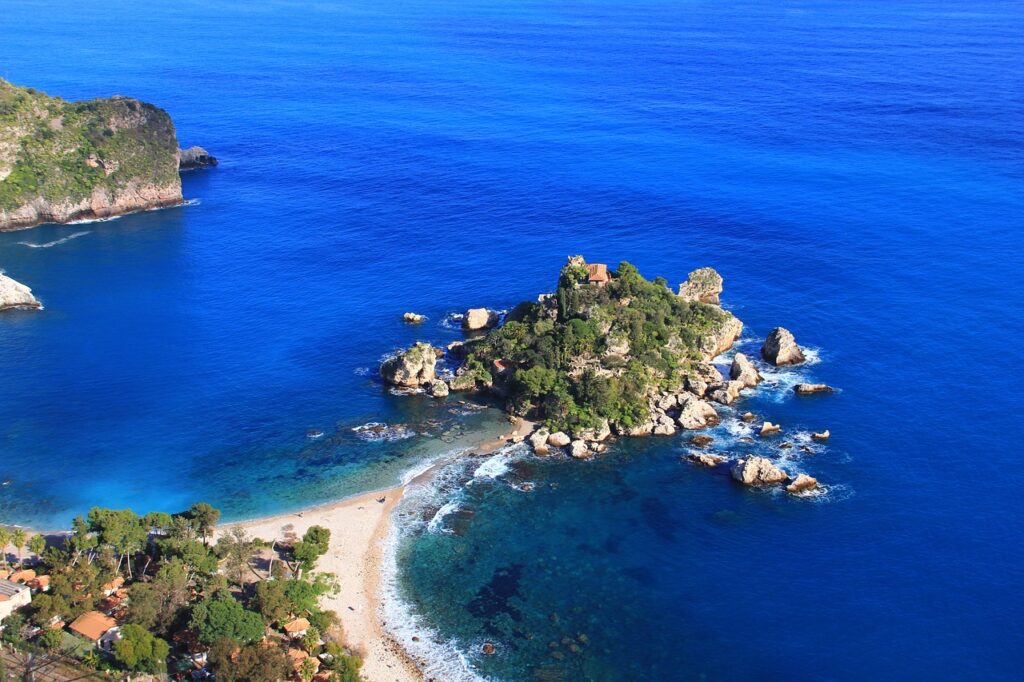
On the western coast, Gallipoli is a must-visit. Its historical center, once an island fortress accessed via a 500-year-old bridge, is a maze of narrow alleys steeped in history. Main attractions include the castle, the Cathedral of Sant’Agata, and Spiaggia della Purità (Purity Beach). The nearby Baia Verde is one of the country’s prime nightlife spots.
Both seas meet at Santa Maria di Leuca, one of Italy’s extreme points. Visitors flock to Punta Ristola to witness both sunrise and sunset.
A boat trip reveals how contrasting the shores are, with the Ionian coast featuring small coves and the Adriatic boasting dramatic cliffs. Both coasts feature caves, some of which served as homes for prehistoric peoples when the sea level was lower.
Archaeologists have uncovered Greek and Roman-era inscriptions, mostly from sailors praying to deities for safe travels during their voyages.
Behind the lighthouse lies a basilica that once served as a temple to the goddess Minerva, though legend has it that during Rome’s pilgrimage, Saint Peter consecrated it as a Christian site.
The second shore of Salento offers rugged and picturesque coastline
Salento’s Adriatic side may not resemble the Maldives, but it’s no less remarkable. During boat rides or snorkeling or rock climbing adventures, the rugged coastline transforms into cliffs and boulders.
One of the most notable spots is Il Ciolo, a gorge where a 40-meter high bridge is visible, serving as a platform for the daring and skilled to cliff dive.
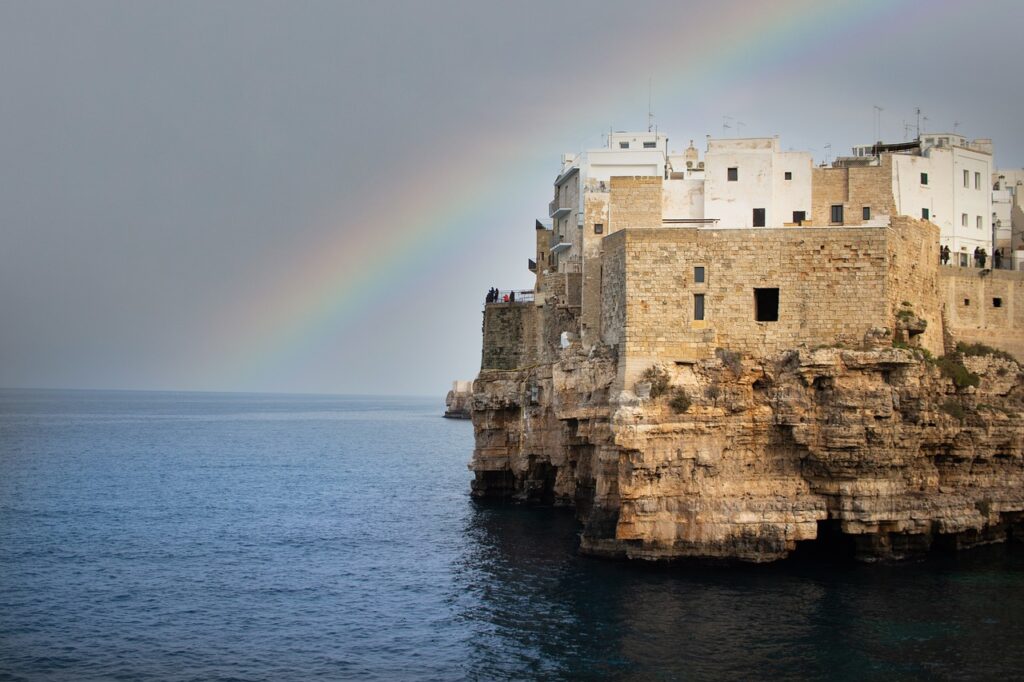
The natural swimming pool of Grotta della Poesia (Poetry Grotto) allows for more accessible cliff diving at just over five meters deep. Among the several caves on the eastern side, Grotta della Zinzulusa stands out, hosting a nativity scene during Christmas time.
You’ll find many seaside towns and villages in Salento named after a tower (torre), such as Torre Lapillo, Torre Chianca, Torre Inserraglio, Torre dell’Orso, and Torre Specchia Ruggeri. These were built in the 15th and 16th centuries when Salento was part of the Neapolitan Kingdom.
Due to its geographical position, Apulia was considered a strategic point between Eastern and Western Europe and Africa, thus requiring protection from invasions.
Another major destination on the Adriatic coast is Otranto, a white-washed city overlooking the blue sea. The historic center is protected by the Porta di Terra, a gateway from the Napoleonic era. Nearby Castro and Santa Cesarea offer experiences of fishing villages.
Which are the best intercity cities to visit in Salento?
The magic of Salento continues in its hinterland, where olive trees, vineyards, and distinct farmhouses, called masserie, dot the landscape.
There are many cities where well-preserved historic buildings can be found, like Ostuni and Nardò, but the city of Lecce stands out among them all.
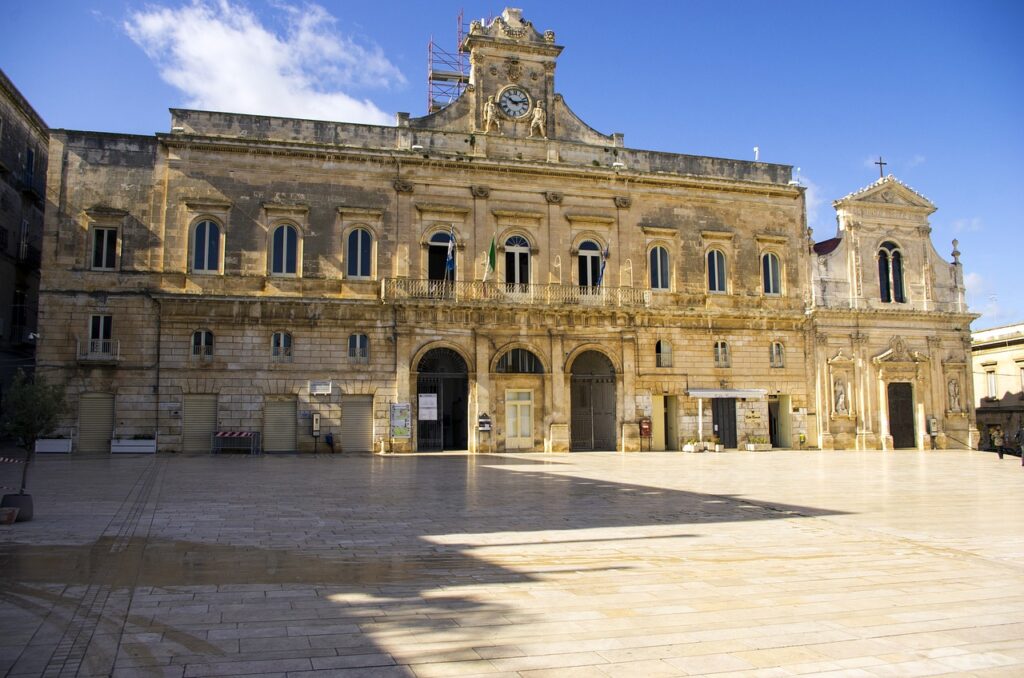
Lecce, the largest city in Salento, is home to the local university and main museums. It’s built of limestone in the Baroque style, which glows pink in the sunlight.
You can find an amphitheater on its main square, excavated nearly a century ago when a local researcher discovered that the area was built on Roman ruins. As they didn’t want to destroy the entire square, Piazza Sant’Oronzo, only half of the amphitheater is visible from ground level.
Among Lecce’s many churches, be sure to visit the Cathedral and Basilica for their exquisite Baroque details.
What’s the Food Like in Salento?
When it comes to dining in Salento, you’re in for a treat of local delicacies ranging from pasta, fish, seafood, burrata, to locally grown vegetables like tomatoes, eggplants, and olives.

One of the signature dishes is “Ciceri e Tria” (pasta with fried chickpeas), which is cooked throughout the year despite its wintery flavors. A typical on-the-go lunch option is “Pucce,” a flatbread usually filled with local cheese, cured meats, and veggies.
For desserts (or snacks!), indulge in “Pasticiotto,” a pastry filled with egg custard, or try “Carruscello,” an ice cream made from fruit with a taste somewhat resembling cucumbers.
When is the Best Time to Visit Salento?
Salento is famous for its brisk winds, but it also gets intensely hot, making July and August the busiest and warmest time to avoid. It might be best to steer clear during these months.
After being ‘discovered’ by tourism on a large scale in the past decade, it has become one of the most modern areas in Italy. Once you visit, you’ll understand why.
May, June, and September also see a decrease in crowds.
- Drake Hogestyn, ‘Days of our Lives’ veteran, dead from cancer a day before his birthday

- SNL kicks off with a star-studded cold open featuring Maya Rudolph as Kamala Harris and a return of Trump

- A mother of two, currently pregnant, feels utterly confined within her home in North Carolina.
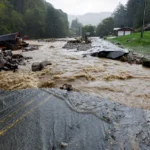
- Caleb Williams Shines with Key Highlights in Stellar Preseason Debut for Bears

- USWNT Completes Redemption with Paris Olympics Gold: The Real Challenge Starts Now for the 2027 World Cup

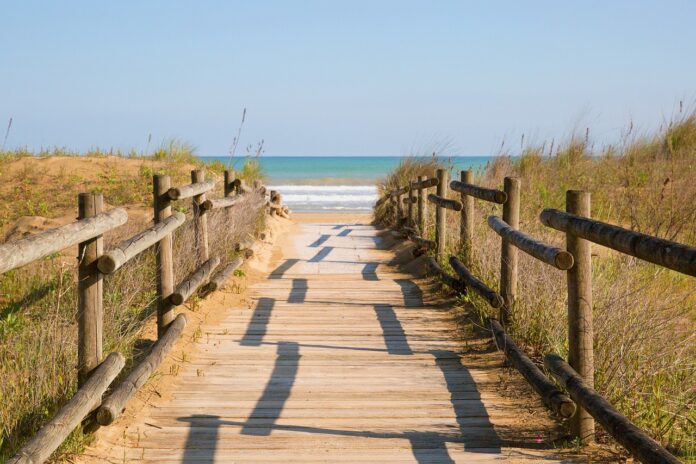



Thank you for your sharing. I am worried that I lack creative ideas. It is your article that makes me full of hope. Thank you. But, I have a question, can you help me?
Thanks for sharing. I read many of your blog posts, cool, your blog is very good.
Can you be more specific about the content of your article? After reading it, I still have some doubts. Hope you can help me.